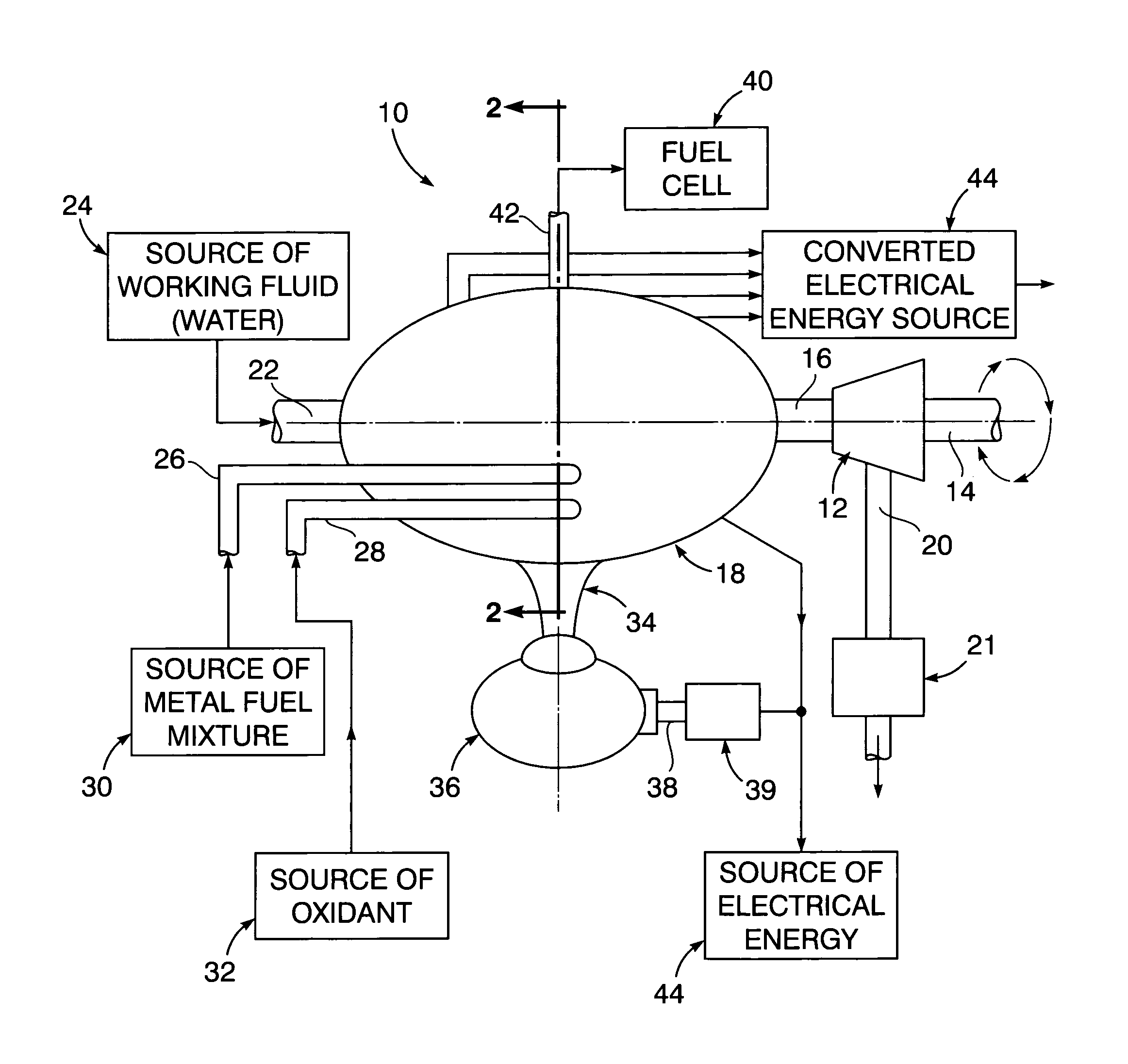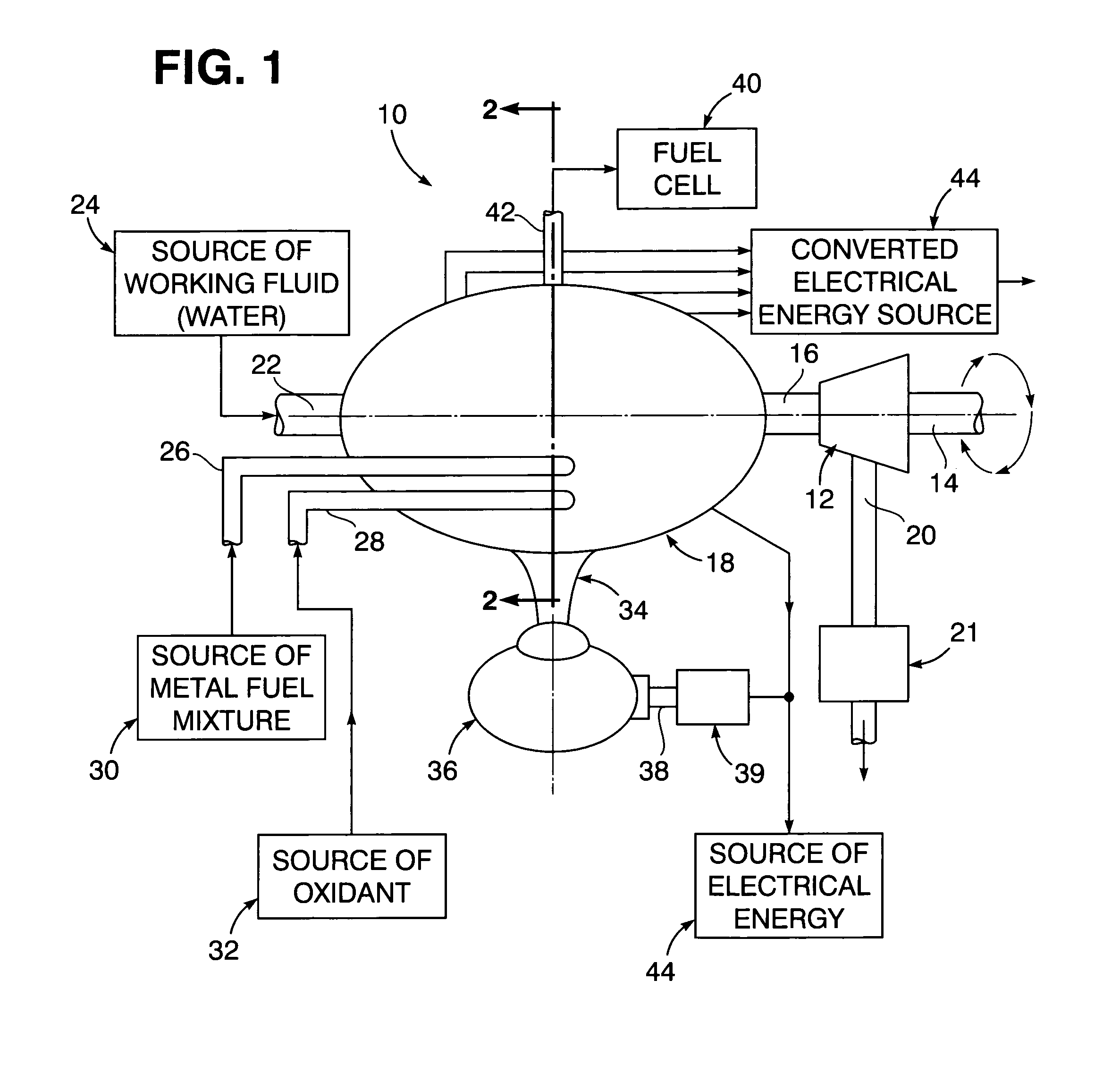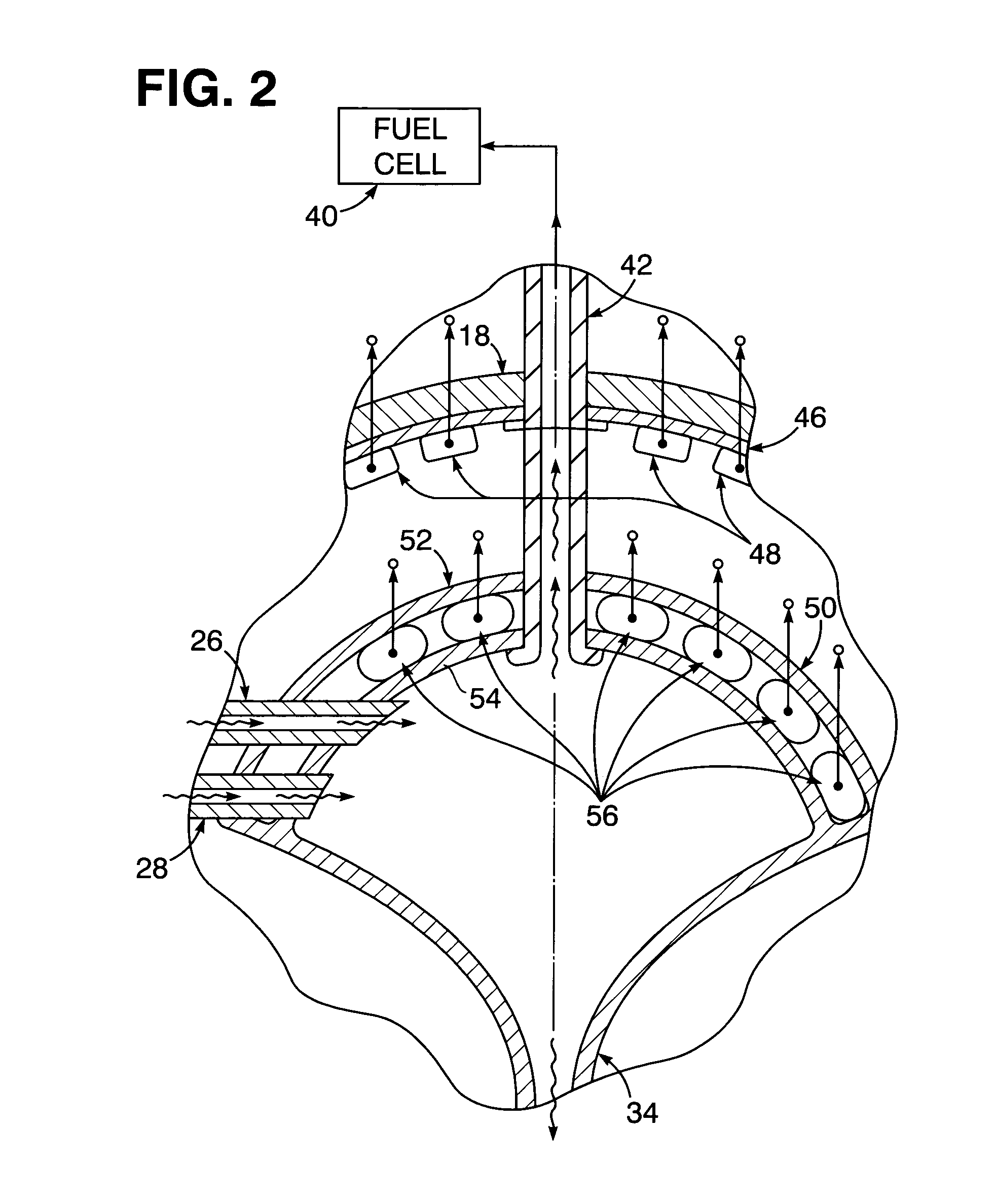Air-independent fuel combustion energy conversion
a technology of fuel combustion and independent combustion, which is applied in the direction of steam engine plants, steam engine plants, machines/engines, etc., can solve the problems of agglomeration and clogging problems, expulsion of a detectable signature from the seawater vessel being propelled, and excessive supply of oxygen extracted
- Summary
- Abstract
- Description
- Claims
- Application Information
AI Technical Summary
Benefits of technology
Problems solved by technology
Method used
Image
Examples
Embodiment Construction
[0011]Referring now to the drawing in detail, FIG. 1 illustrates an air-independent type of fuel combustion energy conversion system 10 through which sea vessel vehicles may be propelled within a seawater environment. Accordingly, the system 10 has a power turbine 12 associated therewith from which a propulsion drive shaft 14 extends to mechanically impart rotational energy to propellers of a propulsion unit, associated with the sea vessel for example. The rotational energy output of the turbine 12 to the shaft 14 is derived from pressurized steam delivered through a steam line 16 from a steam chamber enclosure 18. Low pressure steam is then discharged from the turbine 12 through an exhaust line 20 into a condenser 21 as a result of combustion within the chamber enclosure 18. The pressurized steam supplied to the turbine 12 from the chamber enclosure 18 is derived from a working fluid, such as water, fed into the chamber enclosure 18 through a working fluid infeed line 22 from a sou...
PUM
 Login to View More
Login to View More Abstract
Description
Claims
Application Information
 Login to View More
Login to View More - R&D
- Intellectual Property
- Life Sciences
- Materials
- Tech Scout
- Unparalleled Data Quality
- Higher Quality Content
- 60% Fewer Hallucinations
Browse by: Latest US Patents, China's latest patents, Technical Efficacy Thesaurus, Application Domain, Technology Topic, Popular Technical Reports.
© 2025 PatSnap. All rights reserved.Legal|Privacy policy|Modern Slavery Act Transparency Statement|Sitemap|About US| Contact US: help@patsnap.com



